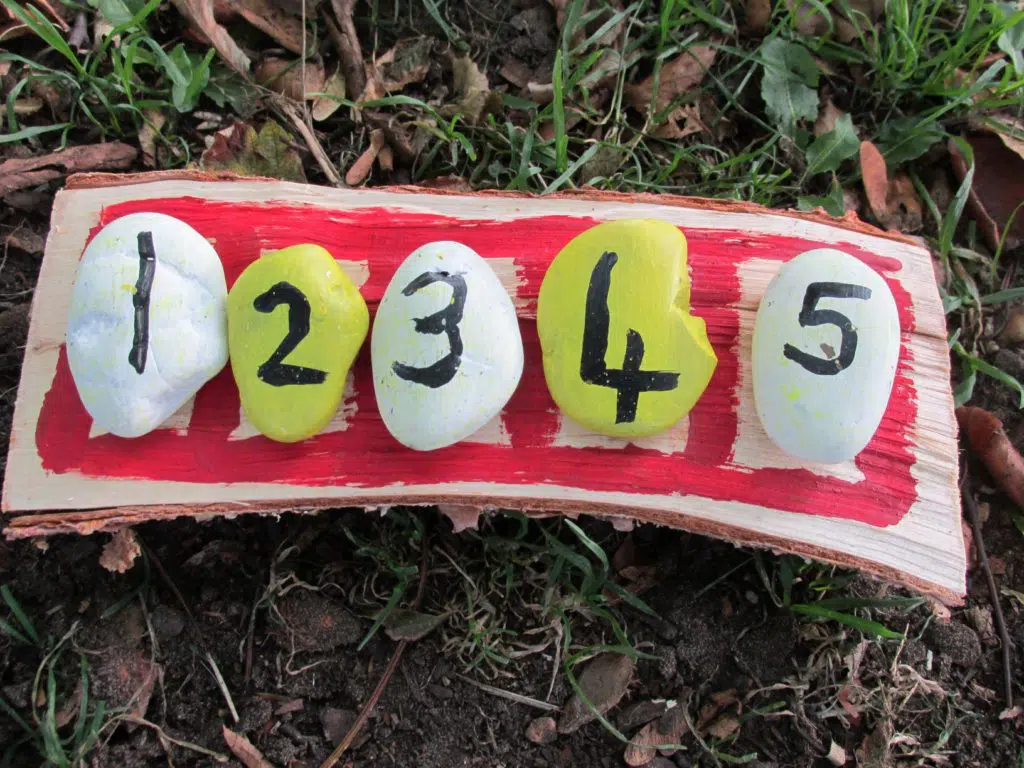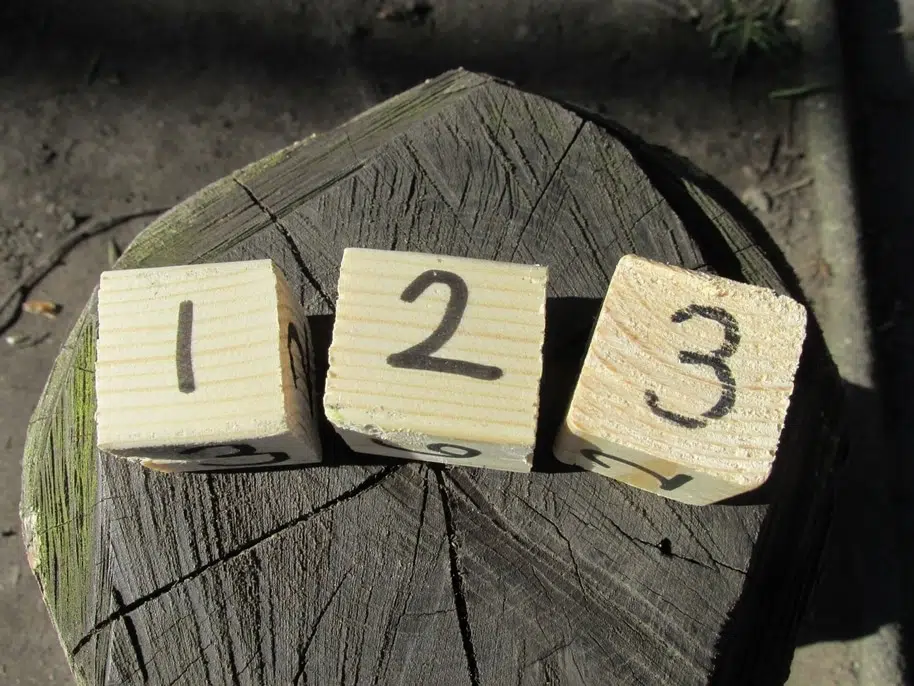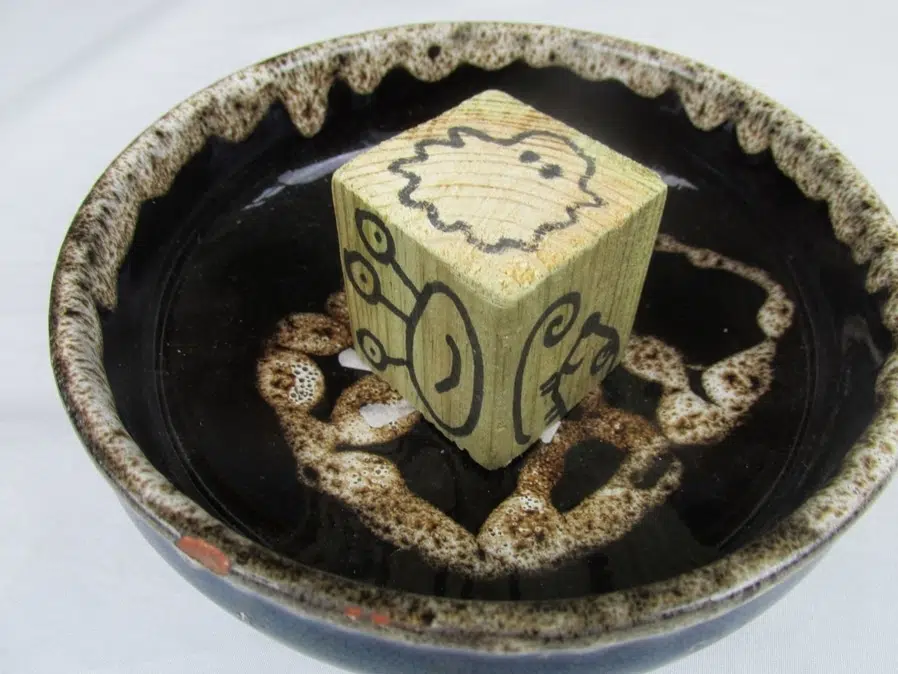In ten years of teaching maths to children aged between 3 to 5 (as well as having three kids at home myself), I have found one of the most important foundation skills is rote counting. But what exactly is it?
Rote counting is saying numbers in order. The numbers are not linked to counting objects or actions. Instead you are just saying a sequence of numbers, i.e. 1,2,3,4… The simplest way is to start from one and count upwards.
Rote counting really is one of the core skills of early maths.
It is a really important skill to practice regularly in many different exciting contexts and games, and forms a bedrock for many of the counting and calculating skills that will follow it.
It starts simple, 1,2,3,4 etc. However, there is a lot more to it. You go on to rote count forwards and backwards, and also rote count from different starting points. Read on to find out everything you need to know about this core early skill.

Rote Counting
The ability to rote count is to understand and memorize the sequence of numbers that we use.
When they have this knowledge, children can then go on and apply it in different contexts.
It is the ability to say a sequence of numbers in order – that really is all it is in a nutshell.
Why Is It Important?
Rote counting comes before the ability to count objects, or actions.
If you are faced with six sweets and need to count them, you need to have a sequence of numbers in your head before you have a fighting chance of working out how many there are.
It is also crucial for calculating, such as adding and finding one more.
These skills come after the ability to rote count, but are impossible to do accurately without the skill of rote counting being first established.

How To Develop It
Rote Counting is something that you can begin very early with children.
Some classic fun games to do with babies and toddlers include:
Counting Stairs
Simply count the stairs as you go up and down.
Counting Songs
There are several counting songs that have opportunities to rote count, and sing numbers in order. Some good examples include:
- 1,2,3,4,5 – Once I Caught a Fish Alive
- 1 Potato, 2 Potato, 3 Potato, 4
- 1,2, Buckle My Shoe
If you’re not sure how these go then just google them! Also I have written an article all about counting songs that count up, along with the ten top songs. You can check that out here.
Another great article that contains lots of maths songs is 14 fantastic parachute maths games
Counting Objects/Actions In Real Life
Make counting things a normal part of life. Although this is not strictly rote counting (as you are counting something), it does develop the skill of rote counting.
Good things to count could be:
- Sweets/chocolates
- Building blocks
- Characters or objects in books
- Food
- Clothes
It is really important to ground early maths as much as possible in the real world. This gets them linking maths to life, which is basically the point of it anyway.
Fun Counting
You can count verbally with children just for the sheer fun of it. They will often try to join in!
• How do you count in different ways using a counting stick?
• Struggling to find counting songs that count up?
• Find out the 17 best ways of teaching rote counting
Preschool Games
There are many games that you can do to really to really extend and consolidate the skills children may have developed through early counting experiences.
Some of these involve counting objects or actions, and again although this is not strictly rote counting, it really does develop the skills of rote counting.
Here are some great games to have a go of:
1.Counting In Different Voices
They really love this! To go with this game I usually use a dice that I made out of a cube of wood (an old building block would work). I’ve drawn 6 characters on the cube, for example a T-rex, a princess, a robot, an alien, and other things like that.
What you do, is a child rolls the dice and then everyone counts in that voice!
For example, if it was a ghost, you all count in your best ghost voice – ‘1,2,3,4, 5 etc.’
Hours of fun! Just keep rolling that dice and repeat.
Top Tip – Count beyond ten! Lots of children think the numbers stop at ten, so always count a little beyond it so they don’t fall into this trap.

2.With A Puppet
Many children are completely mesmerized by puppets for some reason! They will listen to them far more than to a human.
Any type of puppet or toy will work well for this. Get the puppet to count, and then children join in!
This is one of the strategies I describe in my article on 14 activities using puppets to teach maths.
3.Marching And Counting
Making counting active and multi-sensory is definitely the way to go. Its gets children more engaged and learning on a deeper level.
For this game all stand up. You march with big exaggerated movements on the spot, whilst going 1,2,3 etc.
4.Dance Counting
Put on some kind of pumping tune! Anything with a good beat will work.
Then show them some kind of simple dance move, for example going up and then down with your arms. All count upwards whilst doing the dance move. Count beyond ten! Go as far as you can before it is all going wrong.
Then start from one again with a different dance move.
5. Buddy Counting
All children team up with a buddy. Then one child says 1, the next says 2, and keep going like that. Bounce back and forwards as you carry on counting as high as you can go.
These 5 ideas are just the tip of the iceberg. To find out the best 17 activities to play to develop rote counting then check this out.
Different Types Of Rote Counting
The next step with rote counting, is to count in different ways, i.e. not just starting with one.
I would only do this when they are confident counting in a sequence well into the teen numbers. There is no point before that.
Some other ways to rote count are:
- Counting on from a number not one, e.g. 6
- Counting backwards
- Counting backwards from different numbers, e.g. 4
- Chanting numbers in 2s,5s, 10s.
Luckily, all the games you can play to practice counting from 1, you can also do to develop many of these other skills.
Lots of practice of rote counting in these ways will take a long time, but is fundamental in being able to calculate in a range of different ways with accuracy, speed and confidence.
How To Practice Different Types Of Rote Counting
I have written some other resources that really help in developing rote counting in different ways. These include:
Using a counting stick to count forwards/backwards, in 2s, 5s and 10s
Counting on from a given number
Top-Tips For Rote Counting
- If you are a parent, then make counting fun from an early age
- Give lots of praise and encouragement if they join in, even if what they are saying sounds very little like counting!
- Make counting a normal part of life
- Use songs and chants with counting in
- Count beyond ten
- Later count forwards and backwards
- Count from different points
- Use puppets, games, balls and many more things to practice
Conclusion
Rote counting is a really simple thing to practice for both parents and educators. Making counting a fun and normal thing to do helps children to link maths to the world they see around them, and gives them the confidence to use the skills they learn later on. Of course there is loads to to do after rote counting is acquired (Source), but you can’t build the house wihtout the foundations!
If you’ve found this article useful, then you might also like:
What Is A Ten Frame? The Definitive Guide
Symmetry Activities For Kids – 10 Hands On Activities With Pics
